Decoding the phenomenon of Foxconn planning to build several new factories in India, the French newspaper Les Echos said that the Taiwanese electronics giant (China) began to shift its business to this South Asian country because it wanted to seek stability and reduce its dependence on China. Although India will not be able to replace China, it can attract 20% of the world's electronics production.
Recently, Foxconn - Apple's main subcontractor has won a contract to manufacture AirPods and plans to build a factory in India to produce this device. Foxconn's desire to shift to this new location has been confirmed to the press.
This is the first time Foxconn, which assembles 70% of Apple's iPhones, has invested in AirPods production. Company executives were hesitant to accept the order from Apple because the profit margins from making headphones are much lower than those from making iPhones. However, Foxconn eventually accepted as a goodwill gesture for future contracts.
So after the iPhone 14, Foxconn will also manufacture AirPods in India. To ensure the production of this device, Foxconn is planning to invest $ 200 million in a factory located in the southern Indian state of Telangana.
 |
| There are many reasons why Foxconn is shifting production from China to India. (Source: Getty) |
There are several reasons for Foxconn’s shift from China to India. First, the move underscores Foxconn’s desire to diversify its manufacturing base outside of China. It’s also possible that Apple has requested that the factory be located in the South Asian country. Once they ship, these AirPods will be the first products to be manufactured outside of China.
China’s rising labor costs are also a factor. For a long time, the world’s second-largest economy provided an abundant and cheap labor force, which manufacturers have exploited successfully. But recently, demands for higher wages from many unions are making the labor market less competitive.
Moreover, the operations of these electronics manufacturing facilities have been severely disrupted by Beijing's "Zero Covid" policy. In November 2022, the Foxconn factory in Zhengzhou - the world's largest iPhone assembler - was locked down by Chinese authorities, causing Apple's first quarterly revenue decline in nearly three and a half years.
But on top of that, industry players are also worried that rising geopolitical tensions between the US and China could disrupt their businesses. Faced with these risks, all the electronics giants have started a strategy called “China plus one,” which is to deploy additional facilities in Asia.
Government support
Foxconn has been ramping up its operations in India in recent months. In September, the company began manufacturing the iPhone 14 in Tamil Nadu. Until then, Cupertino, California-based Apple had never manufactured its latest models outside of China.
With the backing of the Indian government, Foxconn’s operations have expanded beyond smartphones, partnering with Vedanta, an Indian metals conglomerate, to build a $20 billion semiconductor plant in Gujarat.
In early March 2023, Young Liu, Chairman of Foxconn, met with Indian Prime Minister Narendra Modi. This was the second time they met in less than a year. Prior to this move, Bloomberg revealed that Foxconn was planning to build a $700 million smartphone factory that could employ 100,000 people in the Bangalore area, India's technology capital.
Once operational, the new plant will help boost India’s share of total iPhone production from less than 5% currently to 15%. According to New Delhi authorities, Apple wants to ensure that 25% of its iPhone production is made in India. Analysts at JP Morgan estimate that this percentage could be reached as early as 2025.
New Delhi, which is aiming to strengthen its still-nascent electronics industry, will do whatever it takes to attract international investors in the sector. The government has put $10 billion on the table to subsidize semiconductor projects.
The electronics assembly sector also benefits from a separate subsidy scheme. Last December, Foxconn received €40.5 million in support from the Indian government. Electronics manufacturing also occupies a prominent place in the value chain being built in India.
For now, India’s advantage over China is its abundant and cheap labor, according to Andrea Goldstein, an economist at the Organization for Economic Cooperation and Development (OECD). In the textile industry, for example, a worker earns an average of 0.85 US cents per hour, compared with $1.50 in China, according to calculations by Werner International. In electronics and computers, the average starting salary is $4,000 a year, while an engineer can earn $16,000.
India also offers a huge domestic market, with a burgeoning middle class that numbers in the millions and therefore a large pool of potential customers. Infrastructure, once very poor, has improved dramatically. Finally, the large Indian diaspora, especially those working in leading tech companies, can act as a cultural bridge.
According to Andrea Goldstein, despite its many advantages, the South Asian country also has weaknesses that need to be overcome if it wants to attract investment. India is certainly a democracy, but the business environment still has many disadvantages.
Businesses face difficulties from the government, the tax system is still very complicated, sometimes it is difficult to access land... Finding the right partner to cooperate is not easy. If the government's investment support measures are going in the right direction in the short and medium term, there needs to be more economic structure policies to improve the business environment.
In addition, many economists have expressed concerns about the current product quality issue. If Apple intends to apply the “Chinese formula,” it still has a long way to go to achieve the production quality that is found in China. Last month, The Financial Times revealed that half of the components produced at the Hosur site, operated by the Tata Group, had manufacturing defects and could not be sent to Foxconn for further assembly.
Not enough to replace China
For analyst Andrea Goldstein, India clearly has potential, but it will not replace China, because no company wants to be dependent on a single country. On the contrary, the South Asian country will be able to become a second or third production base for assembly giants like Foxconn, as part of their "China+1" strategy.
China will remain central to this re-division of market share. Today, about 70% of smartphones are made in the Northeast Asian country, but that share is gradually decreasing.
If China’s market share falls to 50%, India could capture 20% of electronics production, with the percentage varying depending on the product. Currently, the electronics sector accounts for just 3.4% of the country’s GDP, according to the India Electronics and Semiconductor Association (IESA).
 |
| Taiwanese (Chinese) giants like Foxconn and Pegatron are investing heavily in India. |
Despite recent progress, India’s infrastructure still lags behind China’s, especially highways. For example, to serve exports, China has 18 of the world’s top 50 ports – compared to just two for India.
Taiwanese giants like Foxconn and Pegatron are investing heavily in India. But that does not mean that India will have its own large electronics assembly companies. With Tata Motors in the auto industry or ArcelorMittal in the steel industry, India has shown the will and ability to create world-class companies.
But OECD economist Andrea Goldstein has not seen such a move in either electronics or textiles, even though they remain “input” sectors for the emerging economy.
And India has yet to have a company strong enough to compete with Foxconn's significant scale and ability to dominate the entire global supply chain.
 | Foxconn will build a factory to produce iPhone screens in the US The plan is intended to guard against the possibility that Apple is forced to manufacture iPhones in the United States. |
 | Apple temporarily stops assembling iPhone 8 Plus due to component problems Suspecting that Wistron - a famous Taiwanese (China) manufacturer - used components of unknown origin, Apple requested... |
 | Foxconn invests $8 billion in Indonesia to 'encroach' on electric car production Foxconn will move its telecommunications parts manufacturing facility from China to Indonesia to manufacture electric car components... |
 | Foxconn 'landed' in Indonesia, investing 8 billion USD in electric vehicle sector On February 9, Indonesian Investment Minister Bahlil Lahadalia said that Foxconn Technology Group headquartered in Taiwan ... |
 | Foxconn expands production operations in northern Vietnam Foxconn - one of Apple's largest manufacturing partners, has signed a $300 million memorandum of understanding to ... |
Source


![[Photo] Determining the pairs in the team semi-finals of the National Table Tennis Championship of Nhan Dan Newspaper](https://vphoto.vietnam.vn/thumb/1200x675/vietnam/resource/IMAGE/2025/5/21/eacbf7ae6a59497e9ae5da8e63d227bf)

![[Photo] Scientific workshop "Building a socialist model associated with socialist people in Hai Phong city in the period of 2025-2030 and the following years"](https://vphoto.vietnam.vn/thumb/1200x675/vietnam/resource/IMAGE/2025/5/21/5098e06c813243b1bf5670f9dc20ad0a)

![[Photo] Prime Minister Pham Minh Chinh attends the groundbreaking ceremony of Trump International Hung Yen Project](https://vphoto.vietnam.vn/thumb/1200x675/vietnam/resource/IMAGE/2025/5/21/ca84b87a74da4cddb2992a86966284cf)
![[Photo] Prime Minister Pham Minh Chinh receives Rabbi Yoav Ben Tzur, Israeli Minister of Labor](https://vphoto.vietnam.vn/thumb/1200x675/vietnam/resource/IMAGE/2025/5/21/511bf6664512413ca5a275cbf3fb2f65)


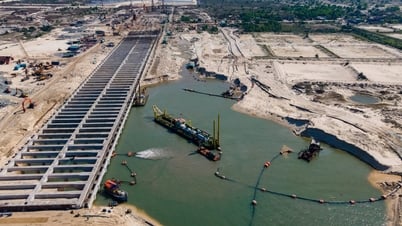
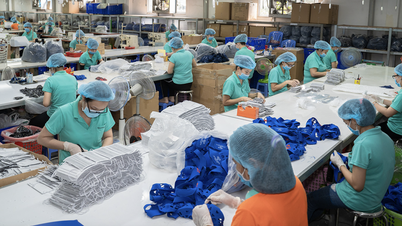
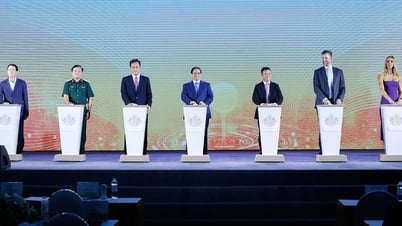









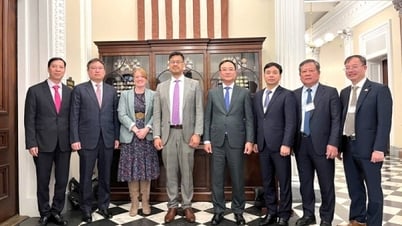
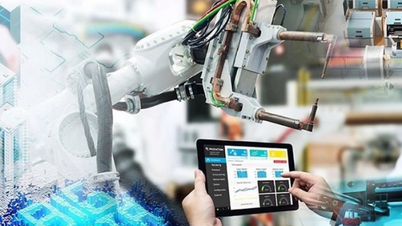
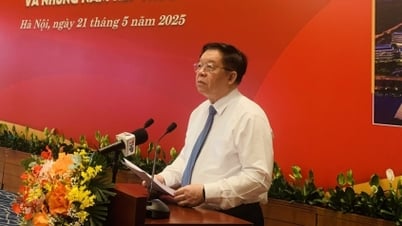



































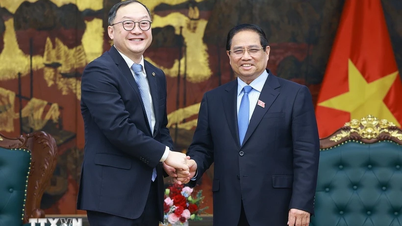







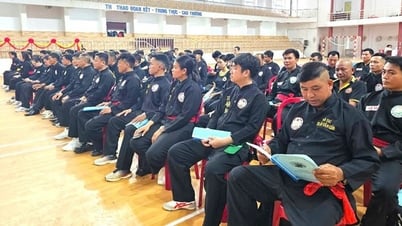



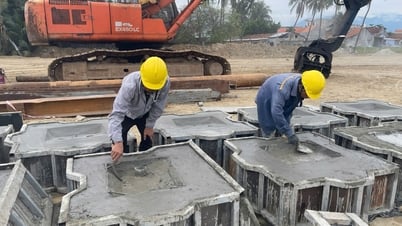

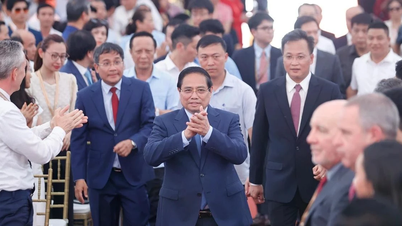





















Comment (0)